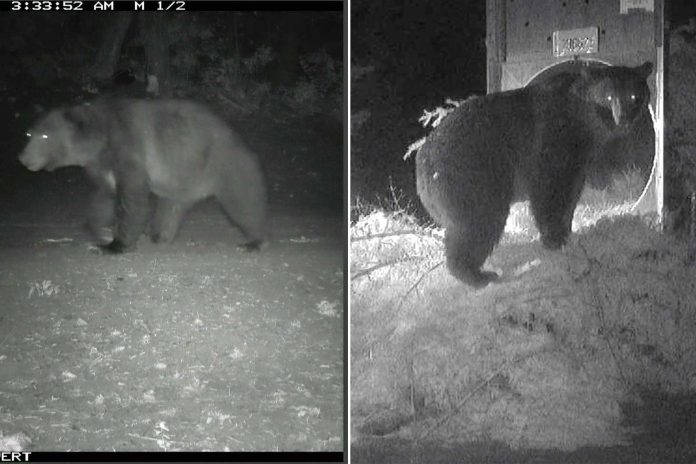On Thursday, September 28, the National Park Service (NPS) and the U.S. Fish & Wildlife Service (USFWS) took the next step in a planning process that could eventually put grizzly bears back into the North Cascade Mountain range of northern Washington State. The feds are now soliciting comments from the public about the proposed plan, which aims to establish a stable population of 200 individual bears in the Evergreen State.
The “North Cascades Ecosystem Grizzly Bear Restoration Plan” includes three different alternatives. There is a “no-action alternative”, which would maintain the status quo without releasing any bears into the North Cascades; then there are two “action alternatives” that the federal agencies called alternatives B and C in a recent statement announcing the plan. “Under both action alternatives, it is anticipated that 3 to 7 grizzly bears would be released into the NCE (North Cascades Ecosystem) over roughly 5 to 10 years with a goal of establishing an initial population of 25 grizzly bears before switching to adaptive management,” the plan states.
The Plan Could Allow for Lethal Management of Problem Bears
Under both of these alternatives, Washington’s newly-released grizzly bears would be protected by the federal Endangered Species Act (ESA). Alternative C, however—which the feds called “the preferred alternative”—grants federal, state, and tribal wildlife agencies greater “management flexibility” when conflicts between humans and grizzlies arise. That means a transplanted grizzly bear caught killing livestock, injuring or killing people, or exhibiting other types of nuisance behaviors could be euthanized—despite overarching safeguards otherwise provided by the ESA.
In order to provide an exemption that allows for potentially lethal management means, the feds would have to designate Washington’s transplanted grizzlies and their offspring as a “nonessential experimental population.” And planners would use the so-called 10(j) rule of the ESA to make that designation. Though shrouded in bureaucratic legalese, it’s a process that should be familiar to anyone who’s kept up with the ongoing saga of wolf reintroduction that is currently underway in Colorado.
“This would give authorities, ranchers, and landowners more options for managing bears to reduce or avoid conflicts while focusing on recovery,” said acting regional director for the U.S. Fish & Wildlife Service Hugh Morrison, in a prepared statement posted to the NPS website. “The 10(j) experimental population designation would benefit the people and property in local communities, as well as the grizzly bears.”
In its September 28 press release, NPS said that “the last confirmed sighting of a grizzly bear in the U.S. portion of the North Cascades Ecosystem was in 1996. Though the charismatic apex predators may indeed be absent from the rugged North Cascade Mountains, they’re not unheard of in Washington State. Just last week, a young grizzly was captured near the town of Colville in Stevens County, about 70 miles north of Spokane. According to the Stevens County Sheriff’s Office, the bear was turned over to USFWS agents who “collared and relocated [it] to a wilderness area where grizzly bears are already located.”
Opposition Arises
Hunting rights and conservation advocacy groups like HOWL.org, The American Bear Foundation, and the Sportsman’s Alliance have all voiced opposition to the federal government’s plan to release grizzlies into the North Cascades. In a position statement on its website, which funnels users directly to NPS’s public comment portal, HOWL says that Washington State—with its recent history of anti-hunting sentiment within its Fish and Game Commission—is a particularly bad place to reintroduce large carnivores like grizzlies.
Read Next: Hunter Shoots and Kills Charging Grizzly Bear in Yet Another Self Defense Encounter in Idaho
“With recent decisions on black bear and potential changes to mountain lion hunting, many conservationists fear the [Washington Fish & Wildlife] Commission is failing to manage its wildlife properly,” the HOWL statement reads. “Introducing more grizzlies would exacerbate this issue. To be clear, reintroduction would not mean a grizzly bear hunting season. The point here is that the state is already under strain from mismanagement of its large population of existing predators beside grizzly bear.”
The NPS comment period began for the proposed grizzly bear reintroduction plan began on September 28, and it will close on November 13, 2023. If you’d like to weigh in, you can so do here.








